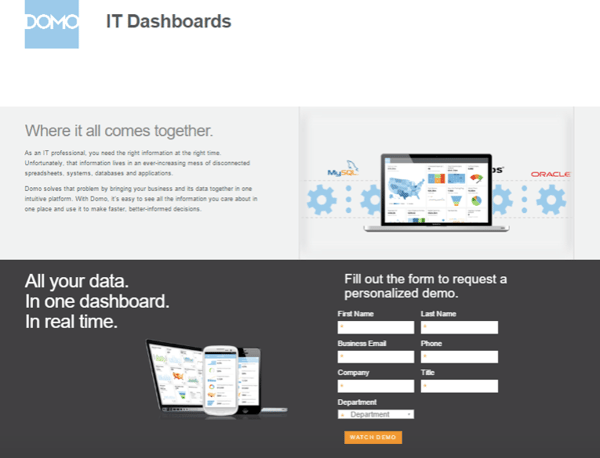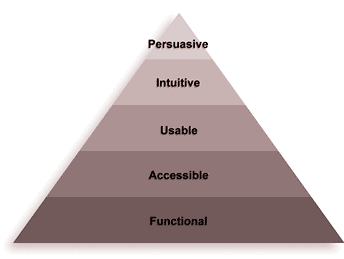There could be many reasons why a landing page is not converting visitors into leads. Before you start changing the elements on your page, it’s important to dig into the data and find out what you’re doing wrong. Then, use this information to begin the process for optimization.
In this post, we’ll learn how to make landing page optimization work for you.
Understand What Your Prospects Want
Example of a landing page:

Source: Instapage
You should create your landing pages based on what you already know about your target audience. That’s where your buyer personas come into play.
[DOWNLOAD]

By having a research-based profile of your ideal customer, you’ll be able to meet your website visitors’ goals, expectations and needs. This will make it easier to better engage with them and deliver the right message.
Use the Right Tools
Don’t be so quick to change your entire landing page simply because it’s not converting. You need real data to guide you in the right direction.
The best way to approach landing page optimization is by figuring out what exactly is contributing to low conversion rates.
You can start by using a heat map. This conversion optimization tool shows you where people are looking and clicking on your landing page. You’ll see whether or not your call to action button is getting the attention you want or how far down the page visitors are scrolling.
Other similar tools that provide valuable information about your visitors’ behavior are overlay reports, scroll maps and confetti maps.
Landing Page Optimization Process
Many marketers focus on changing the elements on the page when they really should be implementing a more holistic approach.
Take a look at the conversion pyramid by the Eisenberg brothers. It focuses on 5 levels of buyer needs - functional, accessible, usable, intuitive and persuasive. Each of their needs must be met starting from the bottom of the pyramid moving upward.

Conversion pyramid by the Eisenberg brothers
Take a closer look at each pyramid level.
Functional: Does your landing page fulfill a specific buyer need? Whether you’re offering a product or service, you need to make your offer clear.
Accessible: Make sure your landing page doesn’t have any technical problems, bugs or loading issues. And remember to optimize it for all devices so that it makes the same impact whether people view it on desktop or mobile.
Usable: Simplify your landing page for a great user experience. You want your visitors to focus on a single prize - your call to action. So keep the copy concise and straightforward, leave white spaces to draw attention to other areas and properly apply page scrolling that works.
Intuitive: Your visitors should be able to navigate your landing page seamlessly. Make your content flow. This also applies to the buying process. A study shows that 87% of people do some sort of research before they decide to buy. Add reviews, testimonials, a video, or even FAQs on your page.
Persuasive: Every element on your landing page should provide a solution or fill in a need. If the visitor doesn’t know they have a problem, educate them by talking to them, not at them. People will trust you if you give them valuable information.
